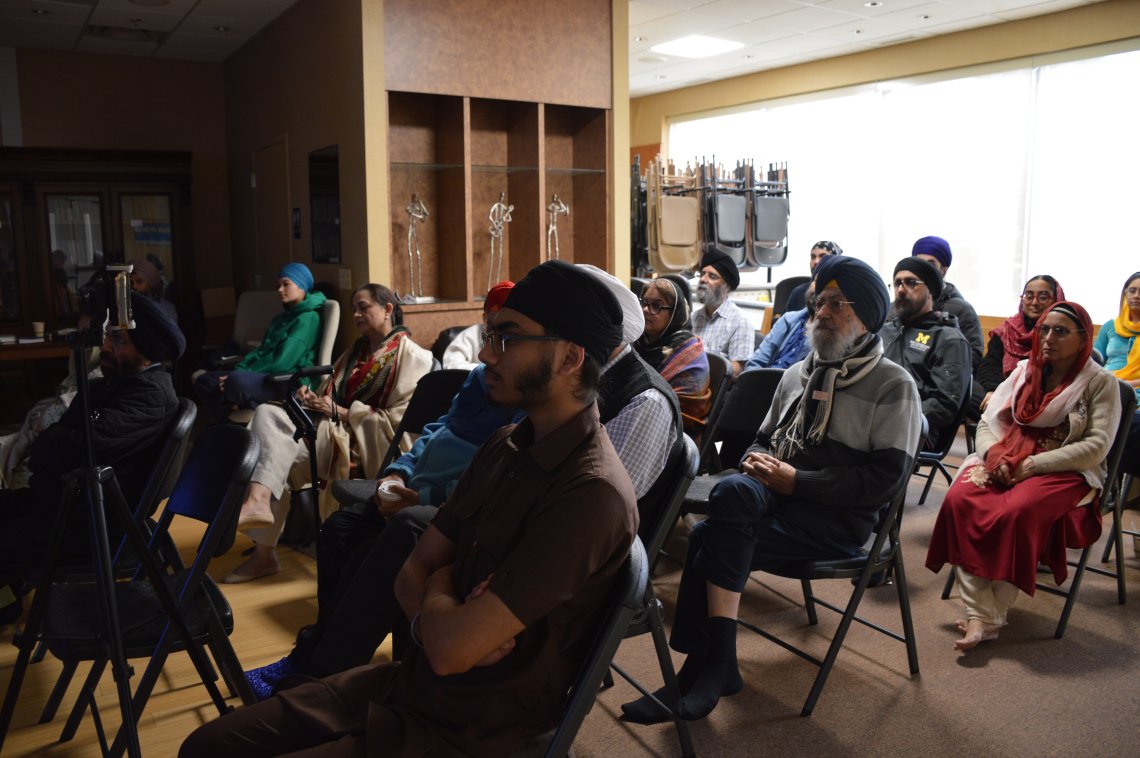A new Journal Shabdarth was released by Naad Pargaas USA at Mata Tripta Gurdwara, Plymouth, Michigan in a ceremony graced by distinguished attendees. Among them were Prof. Arvind-Pal Singh Mandair from the University of Michigan, Ann Arbor; Amandeep Singh, Director of Naad Pargaas USA; Harjot Kaur, Convener of Naad Pargaas; Sukhpal Singh Dhillon, a member of the Gurdwara committee board; and numerous respected members of the Sangat. The ceremony was also live-streamed on YouTube, with the link provided below.
Amandeep Singh emphasized the significance of the journal, describing it as a vital medium for recording and preserving the collective knowledge of an era. He highlighted its importance in shaping history and articulating a voice. Examining the progression of modern Sikh studies, he identified its origins in the Singh Sabha reform movement and highlighted its continuous evolution, which often becomes ambiguously interwoven with ethical fields of inquiry, particularly Punjab studies, without clear distinction. He elaborated on how historical contexts have shaped the epistemological trajectory of Sikh studies both in Punjab and across the diaspora.
Amandeep Singh also discussed the rigorous journey leading to the publication of Shabdarth, which included nurturing students and scholars into accomplished authors. Regular classes were conducted to provide a deep focus on essential aspects of academic writing, such as topic selection, referencing, constructing narratives, developing arguments, conducting field studies, and engaging in the iterative refinement of papers. He described Shabdarth as a journey of self-cultivation, enabling the free exchange of ideas across various disciplines without presupposing "The Other."
The session transitioned into a lively Q&A segment, where participants posed thoughtful questions to the panelists. Dr. Arvind-Pal Mandair, continuing from his earlier session on Sikh Studies, expressed great enthusiasm for the journal's success. He revealed that he had long awaited such an initiative—one capable of enunciating the indigenous voice of Sikhs from Punjab within a truly post-colonial framework. He commended Naad Pargaas for this monumental achievement and extended his best wishes for their ongoing endeavors.
Reflecting on the journal's title, Shabdarth, Harjot Kaur offered a philosophical interpretation. She clarified that the title represents not merely a literal amalgamation of Shabad and Arth but a profound paradigm. It embodies the intrinsic relationship between Shabad (the word) and Arth (meaning), where meaning is inherently intertwined with the word as a unified entity. This paradigm philosophically resonates with the idea that the realms of time, space, and existence are encompassed and continuously revealed in the understanding of Shabad.
In conclusion, Sukhpal Singh Dhillon congratulated the team behind Shabdarth, expressing hope for future initiatives of similar magnitude. He extended his gratitude to the speakers for their enlightening contributions and to the Sangat for their presence and engagement.

